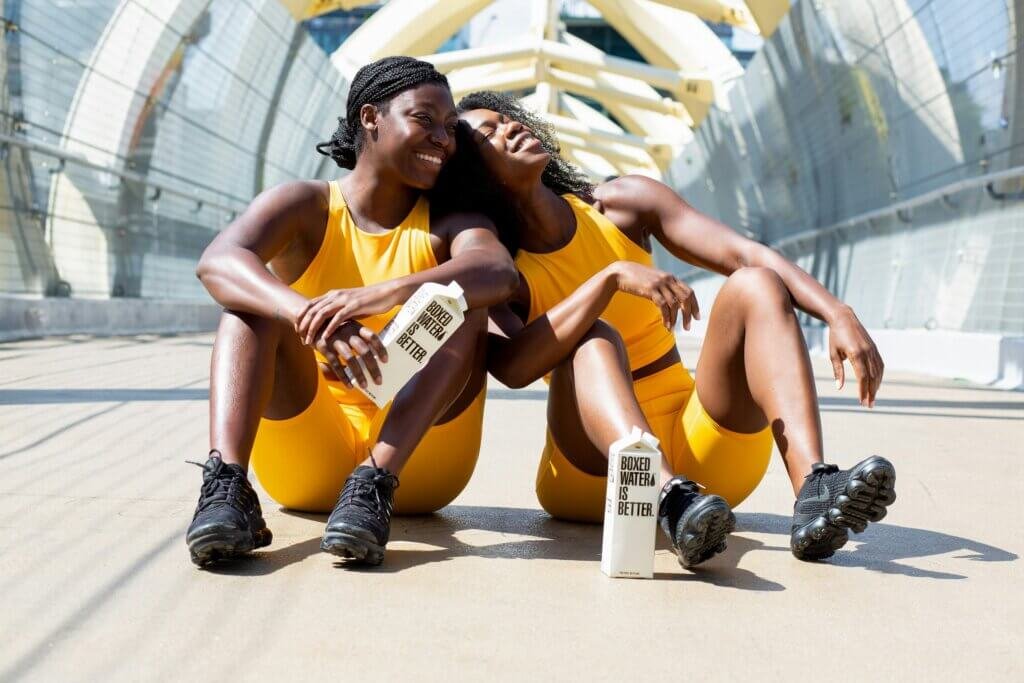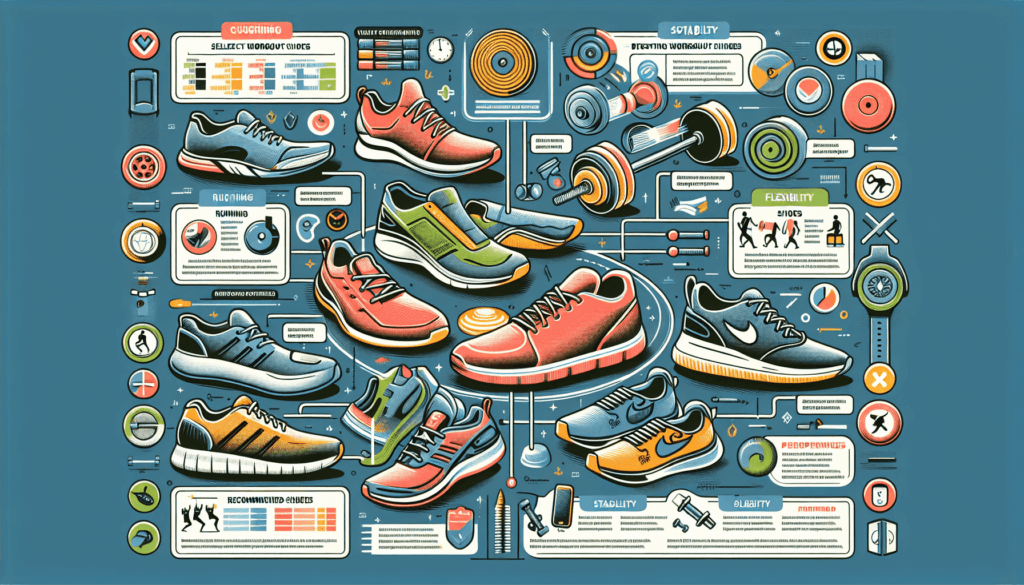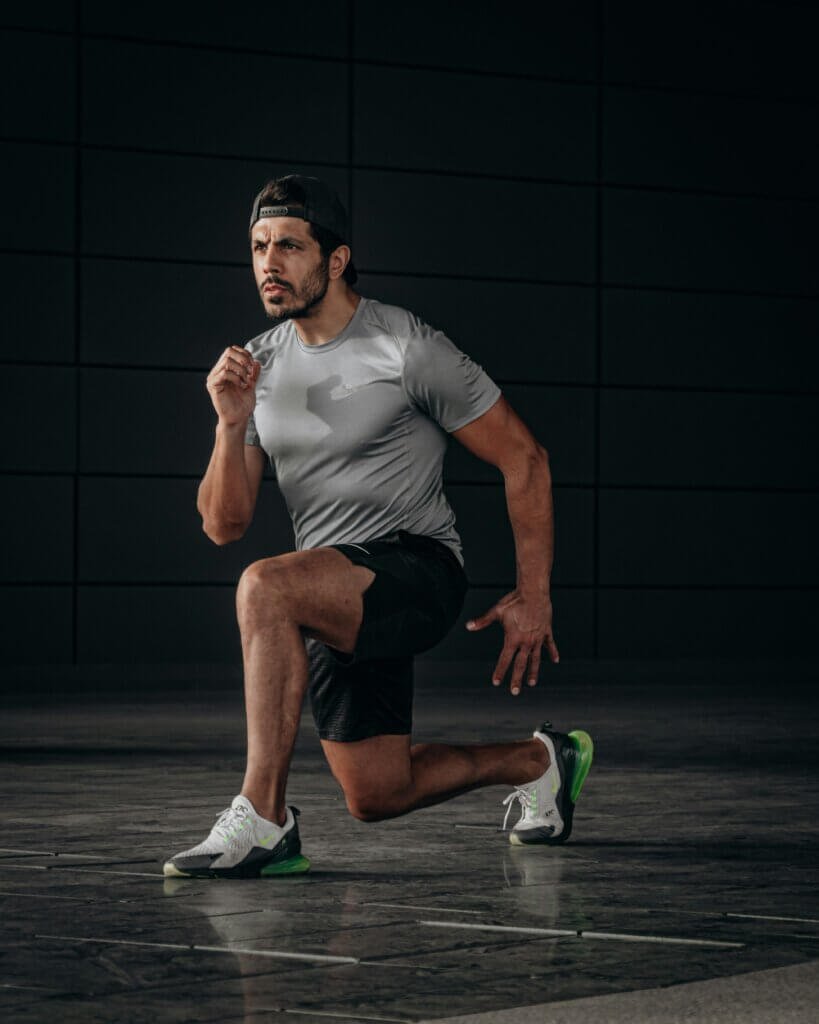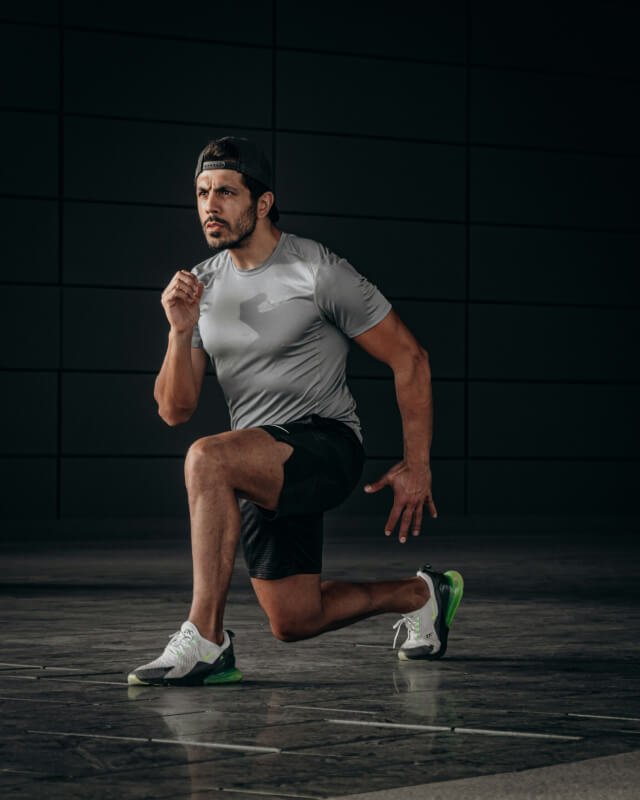Whether you’re a seasoned athlete or just starting out on your fitness journey, one thing is certain – having the right workout shoes can make all the difference in your performance and overall comfort. With countless options to choose from, it can be overwhelming to know which shoes are best suited for your specific activity. Fear not, because in this ultimate guide, we will break down everything you need to consider when selecting the perfect workout shoes for your activity. From running to weightlifting, we’ve got you covered with expert tips and recommendations. Get ready to step up your fitness game with the right pair of shoes!

Understanding the Importance of the Right Workout Shoes
When it comes to your workout routine, the right shoes can make all the difference. Not only do they enhance your performance, but they also reduce the risk of injury and improve your overall comfort. Additionally, investing in the right workout shoes can increase their durability and ensure they last for a long time. So, let’s dive into the reasons why the right workout shoes are so important for your fitness journey.
Enhanced Performance
Choosing the right workout shoes can significantly enhance your performance. Whether you’re running, weightlifting, cycling, or participating in any other physical activity, having the appropriate footwear can boost your overall performance. Good workout shoes provide the necessary support, stability, and cushioning to help you perform at your best. They can improve your balance and traction, allowing you to move with confidence and ease. With the right shoes, you’ll be able to push yourself to new limits and reach your fitness goals faster.
Reduced Risk of Injury
When engaging in physical activities, the last thing you want is to get injured. Wearing the right workout shoes can greatly reduce the risk of injuries during your exercises. Different activities put different stresses on your feet, bones, and joints, and the right shoes can help minimize those impacts. They provide appropriate shock absorption, arch support, and stability, preventing common injuries like sprained ankles, shin splints, and knee pain. By choosing shoes designed specifically for your activity, you can ensure your feet and body are well-protected, allowing you to exercise safely.
Improved Comfort
Comfort plays a crucial role in your workout experience. The right workout shoes can provide the utmost comfort during your exercise sessions. They are designed with features like cushioning, moisture-wicking materials, and anatomical footbeds to ensure maximum comfort for your feet. Whether you’re jogging, dancing, or doing yoga, having comfortable shoes will make your workouts more enjoyable. When your feet are comfortable, it becomes easier to stay motivated and push yourself to do more. So, invest in shoes that prioritize your comfort, and you’ll be more inclined to stick to your fitness routine.
Increased Durability
Investing in the right workout shoes is not only beneficial for your comfort and performance but also for their longevity. Good-quality shoes are built to withstand the demands of your chosen activity, making them more durable. The materials used, such as high-quality rubber outsoles and breathable uppers, can withstand frequent use and provide long-lasting support. By choosing durable shoes, you won’t have to worry about them wearing out quickly or developing any structural issues. A pair of long-lasting workout shoes will save you money in the long run and allow you to focus on your workouts without any distractions.
Identifying Your Specific Workout Activity
The first step in choosing the right workout shoes is to identify the specific activity you’ll be engaging in. Different activities put different demands on your feet, so it’s essential to match your shoes to your specific workout routine. Here are some common workout activities and the types of shoes that work best for each:
Running
For running, you’ll need shoes that provide ample cushioning and shock absorption. Running shoes are designed to protect your feet from the repetitive impact of each stride. Look for features like responsive midsoles, breathable uppers, and a comfortable fit. Additionally, consider the type of running you’ll be doing – trail running, road running, or long-distance running – as each may require different shoe characteristics.
Weightlifting
Weightlifting shoes are specifically designed to provide stability and support during weightlifting exercises. They typically have a flat sole, a raised heel, and a secure fit. These features help maintain proper form, maximize power transfer, and prevent injuries while performing heavy lifts. Look for durable materials, solid construction, and a snug fit in weightlifting shoes.
Cycling
When it comes to cycling, the right shoes can greatly enhance your performance and comfort. Cycling shoes are designed with stiff soles that efficiently transfer power from your legs to the pedals. They typically feature a clipless system that attaches your shoes to the bike pedals, improving efficiency and pedal stroke. Look for shoes that offer proper ventilation, a secure closure system, and compatibility with your bike’s pedal system.
Cross Training
Cross training involves a combination of various activities like weightlifting, cardio, and agility exercises. Cross training shoes provide versatility and support for different movements. Look for shoes with good cushioning, lateral stability, and durable outsoles. These shoes should be able to handle the impact of jumping, lateral movements, and weightlifting.
Dancing
Dance shoes are specialized footwear designed for various dance styles such as ballet, jazz, and hip-hop. These shoes offer flexibility, support, and grip to enable fluid movements and proper footwork. Look for dance shoes that provide a snug fit, cushioning in the ball of the foot, and non-slip soles to prevent any accidental slips or falls.
HIIT
High-Intensity Interval Training (HIIT) involves intense bursts of exercise followed by short periods of rest. HIIT shoes should offer stability, cushioning, and durability to withstand the vigorous nature of HIIT workouts. Look for shoes that provide good shock absorption, lateral support, and a comfortable fit for quick movements and changing directions.
Yoga
Yoga shoes are not necessary for practicing yoga, as most yoga poses are traditionally done barefoot. However, some yogis prefer wearing yoga shoes for added grip, support, and hygiene. Yoga shoes should have a thin, non-slip sole and a breathable design. Look for shoes that allow freedom of movement while providing a secure grip on the mat.
Sports
Different sports require specific shoes to maximize performance and reduce the risk of injury. Whether it’s basketball, tennis, soccer, or any other sport, make sure to choose shoes designed for that particular activity. Sports shoes typically have features like ankle support, traction, and stability. Look for shoes that provide the necessary support and flexibility needed for your chosen sport.
Outdoor Activities
If you enjoy outdoor activities like hiking or trail running, specialized outdoor shoes are essential. These shoes are designed with rugged outsoles for traction on uneven terrain, waterproofing or water resistance, and durable construction. Look for shoes that offer ankle support, toe protection, and weatherproof features to keep your feet comfortable and safe during outdoor adventures.
Considerations Based on Foot Type
Understanding your foot type is crucial when choosing the right workout shoes. Different foot types have varying arch heights, pronation tendencies, and specific support needs. Here are some common foot types and considerations for each:
Flat Feet
Flat feet have little to no arch, causing the entire foot to make contact with the ground. When choosing shoes for flat feet, look for stability and arch support. Motion control shoes are ideal as they offer maximum support to control pronation and provide stability during activities.
High Arches
High arches result in a more pronounced arch where only the heel and ball of the foot make contact with the ground. For high arches, look for shoes with good cushioning and flexibility. Cushioned shoes help absorb shock and reduce pressure on the arch, providing overall comfort and support.
Neutral Arch
Neutral arches have a moderate arch height, which is considered the most biomechanically efficient foot type. With a neutral arch, you have more flexibility in shoe selection. Shoes with adequate arch support and cushioning are typically suitable for neutral arches.
Overpronation
Overpronation occurs when the foot rolls excessively inward during the foot strike. This can lead to instability and increased risk of injuries. If you have overpronation, look for motion control shoes that provide maximum support and stability to reduce excessive inward rolling.
Supination
Supination, also known as underpronation, happens when the foot doesn’t roll enough inward during the foot strike, resulting in insufficient shock absorption. Supinators should opt for cushioned shoes that provide extra shock absorption and flexibility to compensate for the lack of pronation.
Choosing the Right Shoe for Your Foot Type
Now that you understand your foot type and its specific needs, it’s time to choose the right shoes that cater to those requirements. Here are some shoe recommendations for different foot types:
Motion Control Shoes for Overpronation
For overpronators, motion control shoes are highly recommended. These shoes have a firm midsole and supportive features to prevent excessive inward rolling of the foot. Look for shoes with a robust arch support system, built-in stability features, and a structured design to help keep your foot properly aligned.
Cushioned Shoes for Supination
Supinators should opt for shoes with extra cushioning to absorb shock and reduce the impact on their feet. Look for shoes with ample cushioning in the midsole and heel to provide the necessary shock absorption. Flexible yet supportive materials will help encourage a more natural foot motion and enhance comfort.
Stability Shoes for Flat Feet
Flat-footed individuals require stability shoes that provide a supportive platform and proper arch support. Look for shoes with a supportive medial post, a firm midsole, and a structured design to help control overpronation. Stability shoes offer the necessary support for flat feet and help distribute the weight evenly across the foot.
Neutral Shoes for Neutral Arch
Those with a neutral arch have the flexibility to choose from a wide range of shoes. Neutral shoes typically provide a balanced mix of cushioning, support, and flexibility. Look for shoes that offer a comfortable fit and moderate arch support, catering to the natural alignment of your foot.
Different Arch Support Options
In addition to specific shoe types for different foot types, you can also consider using supplemental arch support insoles. These insoles can be inserted into your shoes and provide customized support based on your arch height and pronation tendencies. They can further enhance the fit and support of your workout shoes, providing added comfort and reducing the risk of foot fatigue.

Understanding Shoe Features and Terminology
To choose the right workout shoes, it’s essential to understand the various features and terminology associated with them. Here are some key terms you should familiarize yourself with:
Outsole
The outsole is the bottom part of the shoe that comes into direct contact with the ground. It provides traction, durability, and protection against slips and falls. Look for shoes with durable rubber outsoles that offer excellent grip on different surfaces.
Midsole
The midsole is the layer between the outsole and the upper. It is responsible for cushioning and stability. Look for shoes with midsoles that have adequate cushioning to absorb shock and provide comfortable support during your workouts.
Upper
The upper is the top part of the shoe that covers your foot. It holds your foot in place and provides breathability and support. Look for uppers made from breathable materials like mesh or knit, ensuring proper ventilation to prevent excessive sweating and odor.
Heel Drop
The heel drop, also known as the offset, refers to the difference in height between the heel and the forefoot of the shoe. It affects the angle of your foot and can impact your running or walking gait. Consider the heel drop based on your personal preference and comfort.
Toe Box
The toe box is the space provided for your toes at the front of the shoe. It should offer enough room for natural toe movement without feeling restricting or too loose. Look for shoes with a spacious toe box to prevent discomfort and promote proper toe splay.
Breathability
Breathability refers to the shoe’s ability to allow air to flow and keep your feet cool and dry. Look for shoes with breathable materials and features such as mesh panels or perforations that promote airflow and prevent excessive sweating.
Flexibility
Flexibility determines how easily the shoe bends and moves with your foot. Look for shoes with a flexible midsole and outsole that allow for natural foot movement. Flexibility is particularly important for activities that require quick and agile movements.
Support
Support refers to the shoe’s ability to provide stability and alignment for your feet and ankles. Consider the level of support based on your specific activity and foot type. Look for shoes with features like arch support, heel counters, and supportive uppers to ensure proper foot alignment.
Cushioning
Cushioning refers to the shoe’s ability to absorb shock and provide comfort. Look for shoes with adequate cushioning in the midsole and heel to reduce the impact on your joints and prevent foot fatigue.
Lightweight Materials
Lightweight materials in workout shoes help reduce the overall weight of the shoe, allowing for faster and more efficient movements. Look for shoes made from lightweight synthetic materials or innovative technologies that provide durability without compromising on performance.
Style and Design
While style and design may not directly impact the functionality of workout shoes, they can contribute to your overall satisfaction and motivation. Choose shoes that align with your personal style preferences and make you feel confident during your workouts. It’s important to strike a balance between functionality and aesthetics.
Sizing and Fit
Proper sizing and fit are crucial for finding the right workout shoes. Ill-fitting shoes can lead to discomfort, blisters, and even injuries. Here are some considerations for getting the perfect fit:
Measurement Techniques
To determine your shoe size, you can use various measurement techniques. The most accurate method is to have your feet measured by a professional using a Brannock device. However, you can also measure your feet at home using a ruler or a measuring tape.
Measure both feet and choose the size that corresponds to your larger foot. It’s important to measure your feet in the evening or after a workout when they are slightly swollen. This ensures that you account for any size changes that occur throughout the day.
Importance of Trying on Shoes
Even if you know your shoe size, it’s essential to try on shoes before making a purchase. Different brands and models can have slight variations in sizing and fit. Trying on the shoes will allow you to assess the overall comfort, arch support, and toe room.
Consideration for Different Activities
Consider the specific requirements of your chosen activity when trying on shoes. Certain activities may require a tighter fit for better stability, while others may benefit from a looser fit for added comfort. Take this into account when evaluating the fit of the shoes.
Proper Sizing for Different Brands
Keep in mind that sizing can vary between different shoe brands. A size 9 in one brand may not fit the same as a size 9 in another brand. Refer to the brand’s specific size charts and customer reviews to determine if their shoes run true to size or if you need to size up or down.
Allowance for Toe Room
When trying on workout shoes, ensure that there is enough room for your toes to move freely without feeling cramped. There should be a thumb’s width of space between the longest toe and the front of the shoe. This allows for natural toe movement and prevents discomfort or toenail issues.

Factors Influencing Shoe Selection
Several factors can influence your shoe selection process. It’s important to consider these factors to ensure you choose the right shoes for your specific needs:
Activity Intensity and Duration
The intensity and duration of your chosen activity play a significant role in shoe selection. High-impact activities like running or HIIT may require more cushioning and support compared to low-impact activities like yoga or cycling. Consider the level of impact your activity involves and choose shoes accordingly.
Terrain and Surface
Consider the terrain and surface on which you’ll be exercising. Different surfaces may require specific shoe characteristics. For example, trail running shoes have more aggressive treads and additional stability features for uneven terrains. Pick shoes that offer the necessary traction and stability for your chosen surface.
Weather Conditions
Weather conditions can impact your workout experience and the type of shoes you need. For instance, if you’ll be running in rainy conditions, look for shoes with waterproof or water-resistant features to keep your feet dry. In hot weather, prioritize breathability to prevent excessive sweating and discomfort.
Budget Constraints
Your budget is an important consideration when choosing workout shoes. While it’s tempting to go for the most expensive or trendy options, there are plenty of affordable options available. Set a budget and look for shoes that offer the necessary features within your price range. Remember that investing in quality shoes is a smart decision, as they will last longer and provide better support in the long run.
Understanding the Different Types of Workout Shoes
Now that you have a clear understanding of your specific activity and foot type, it’s time to explore the different types of workout shoes available. Here are some of the most common types of workout shoes and their characteristics:
Running Shoes
Designed specifically for running, these shoes offer cushioning, support, and flexibility. They are ideal for absorbing shock and providing a comfortable stride during your runs. Look for features like responsive midsoles, breathable uppers, and a secure fit to enhance your running performance.
Cross Training Shoes
Cross training shoes are versatile and suitable for a wide range of activities. They offer cushioning, stability, and durability, allowing you to transition between different exercises smoothly. Look for shoes with good lateral support, multi-directional traction, and a durable construction.
Weightlifting Shoes
Weightlifting shoes are specially designed to provide stability and support during weightlifting exercises. They typically have a flat sole, a raised heel, and a secure fit. These shoes help maintain proper form, maximize power transfer, and prevent injuries while performing heavy lifts.
Cycling Shoes
Cycling shoes are designed to enhance your performance and comfort during cycling. They typically feature stiff soles for efficient power transfer and a secure closure system to keep your feet firmly in place. Look for shoes that offer proper ventilation, compatibility with your bike’s pedal system, and a comfortable fit.
Dance Shoes
Dance shoes are designed for various dance styles, such as ballet, jazz, and hip-hop. They provide flexibility, support, and grip for fluid movements and footwork. Look for dance shoes that match your specific dance style, offer a snug fit, cushioning in the ball of the foot, and non-slip soles.
Hiking and Trail Shoes
Hiking and trail shoes are essential for outdoor enthusiasts. These shoes offer rugged outsoles for traction on uneven terrain, waterproofing or water resistance, and durable construction. Look for shoes that provide ankle support, toe protection, and weatherproof features for a comfortable and safe outdoor experience.
Yoga Shoes
While yoga is traditionally practiced barefoot, some individuals prefer wearing yoga shoes for added grip, support, and hygiene. Yoga shoes typically have a thin, non-slip sole and a breathable design. Look for shoes that allow freedom of movement while providing a secure grip on the mat.
Tennis and Sports Shoes
Different sports require specialized shoes to maximize performance and reduce the risk of injury. Tennis shoes, for example, have exceptional lateral support and durable outsoles designed for quick movements on the court. Look for shoes that provide specific features tailored to your chosen sport for optimal performance.
Indoor and Outdoor Shoes
Consider whether you’ll be primarily exercising indoors or outdoors when selecting your workout shoes. Indoor shoes may focus more on providing grip and support for indoor surfaces, while outdoor shoes offer features like weather resistance and rugged outsoles for various outdoor terrains. Choose shoes that match your exercise environment to ensure the best performance and durability.

Exploring Brand and Model Options
With so many brands and models available in the market, choosing the right workout shoes can feel overwhelming. Here are a few tips for navigating the options and finding the perfect fit:
Popular Brands in the Market
Research popular brands that are known for producing high-quality workout shoes. Brands like Nike, Adidas, Reebok, New Balance, and Asics are recognized for their commitment to performance, durability, and innovation. Explore the offerings from these brands as a starting point for your search.
Reviews and Ratings
Before making a purchase, read customer reviews and ratings to gain insights into the performance and durability of the shoes you’re considering. Pay attention to feedback from individuals with similar foot types and activities. Authentic user reviews can provide valuable information and help you make an informed decision.
Seeking Expert Recommendations
If you’re unsure which shoe to choose or need specific guidance, consult with fitness professionals, podiatrists, or shoe store specialists. These experts can assess your foot type, gait, and activity level and recommend appropriate shoe options. Their expertise can help ensure you find the best shoes for your needs.
Trying Different Models
Don’t be afraid to try on different models and styles of workout shoes to find the perfect fit. Shoe comfort and performance can vary between models, even within the same brand. Experimenting with different options allows you to compare and contrast the fit, comfort, and features of each shoe and make a well-informed decision.
Maintenance and Care for Workout Shoes
To ensure your workout shoes provide you with optimal performance and durability, it’s important to take care of them properly. Here are some tips for maintaining and caring for your workout shoes:
Cleansing and Deodorizing
Regularly clean your workout shoes to remove dirt, sweat, and odor. Follow the manufacturer’s guidelines for cleaning your specific shoe model. Use a mild detergent, warm water, and a soft brush to clean the uppers and outsoles. Allow them to air dry thoroughly before wearing them again. Additionally, use deodorizing products or inserts to keep your shoes smelling fresh.
Allowing Proper Drying
After each workout, remove your shoes and allow them to dry properly. Avoid leaving them in enclosed spaces or direct sunlight, as excessive heat can damage the materials. Remove the insoles if possible to facilitate quicker drying. Proper drying prevents moisture buildup, which can lead to bacterial growth and deterioration of the shoe’s structure.
Replacing Worn-out Shoes
Know when it’s time to replace your workout shoes. Over time, the cushioning, support, and outsole grip deteriorate, reducing their effectiveness. If you notice visible signs of wear and tear, loss of cushioning, or decreased stability, it’s a good indication that it’s time for a new pair. Replace your shoes regularly to ensure optimal support and performance.
Storage and Handling
Store your workout shoes in a cool, dry place away from direct sunlight. Avoid placing heavy objects on top of them to prevent warping or permanent deformities. If you need to transport your shoes, use a shoe bag or separate compartment in your gym bag to protect them from damage. Proper storage and handling prolong the life of your shoes and maintain their performance capabilities.
By following these maintenance and care tips, you can maximize the lifespan of your workout shoes and get the most out of your investment.
In conclusion, choosing the right workout shoes is essential for optimal performance, reduced injury risk, improved comfort, and increased durability. Understanding your specific activity, foot type, and the different types of workout shoes available will guide you towards choosing the perfect pair. Consider the features, fit, and factors influencing your shoe selection to find the best shoes for your needs. Taking care of your workout shoes through proper maintenance and care will ensure they continue to support you on your fitness journey. So, put your best foot forward, invest in the right shoes, and get ready to conquer your workouts with confidence and comfort.



